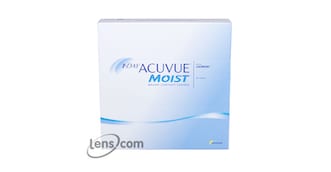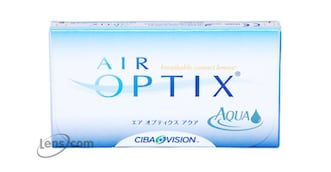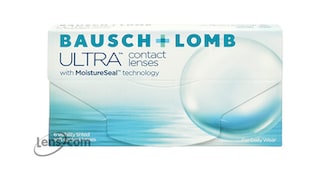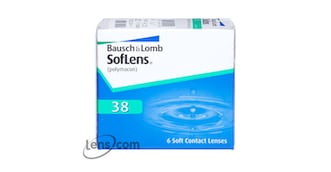Contact Lenses for Kids
For the most part, children’s eyes can tolerate contact lenses without any issues. Contact lenses are also cheaper and easier to replace than glasses. Plus, contacts free a child of any worry they may have about losing or damaging their glasses.
| Most Popular Contact Lenses for Kids Contact Lenses | |||
|---|---|---|---|
| All Contact Lenses for Kids Contact Lenses | |||
|---|---|---|---|
| Contact Lenses for Kids Contact Lenses With Rebates | |||
|---|---|---|---|
See All Available Contact Lenses for Kids Rebates
| Rebates for Order Amounts | |||
|---|---|---|---|
| Contact Lenses for Kids Brand Products | 4 Boxes | 8 Boxes | |
| 1-Day Acuvue Moist 30 Pack | $85 | -- | |
| 1-Day Acuvue Moist 90 Pack | $105 | $220 | |
| Acuvue 2 | -- | $180 | |
| Air Optix Aqua | $85 | -- | |
| Avaira Vitality | -- | $160 | |
| Biofinity | $85 | -- | |
| Biotrue ONEday | -- | $160 | |
| Focus Dailies | -- | $160 | |
| SofLens 38 (Optima FW) | $75 | -- | |
| ULTRA | $85 | -- | |
About Contact Lenses for Kids Contacts
Benefits of Contact Lenses for Kids
Kids can benefit immensely from wearing contact lenses. For starters, contacts allow kids to play sports or be involved in physical activities frequently without having to worry about losing or damaging their glasses.
Contacts may also provide better vision than glasses if your kid is significantly nearsighted or if they have cornea damage from a disease or injury. Moreover, contacts can improve kids’ attitudes towards their appearance. Kids, particularly those who wear glasses with thick lenses, may feel conscious about their appearance, and this may negatively affect their school performance and self-image.
Studies have shown that both children (eight to 12 years of age) and teenagers (13 to 17 years of age) report similar improvements in vision-related quality of life after wearing contacts in that they are more satisfied with their visual acuity and ability to participate in activities. Plus, wearing contacts improves their own perceptions of their physical appearance, competence in athletic activities, and social acceptance.
Is your kid ready for contact lenses?
If an eye care professional (ECP) recommends that your kid wear contact lenses, it’s likely because contacts are the ideal vision correction option for your kid.
However, wearing contacts involves a level of responsibility and the ability to follow a lens care routine. Very young kids need their parents’ help to care for their contacts. But according to one study, kids between the ages of eight and 11 are responsible enough to care for their contacts.
It’s important that contacts are properly cared for because they’re not entirely risk-free. If not cared for, worn properly, and replaced routinely, contacts can cause infection and other eye complications.
A good way to determine if your kid is responsible enough for contacts is to look at how responsible they are in other areas of their life. Do they make their bed without being prodded? Do they help with household chores, like putting dishes away? Do they brush their teeth without being asked to do so? Do they do their homework on time? If the answer to all of these questions is yes, then your kid is likely responsible enough for contacts.
Which contact lenses are best for kids?
The most popular contact lenses for kids are daily disposable contact lenses, and it isn’t hard to see why. Daily disposables require minimal cleaning because they’re designed to be used for only one day. At the end of the day, simply remove and throw them away, then use a fresh pair of contacts the next morning. With daily disposables, there is a lower risk of deposit buildup, which can cause irritation.
Daily disposables are also available in a wide range of prescriptions and lens types. They can correct nearsightedness, farsightedness, and astigmatism, all of which can occur in children. Some popular brands of daily disposable contact lenses include Biotrue® ONEday by Bausch + Lomb, which stay moist all day, Focus® Dailies® by Alcon, which are designed for maximum comfort, and 1-Day Acuvue Moist, which are better for kids with sensitive eyes.
Bi-weekly and monthly contact lenses that are indicated for daily wear are also good options for kids, but only for those who are responsible enough to follow a lens care routine. Popular bi-weekly contacts include Acuvue 2 by Johnson & Johnson, Avaira Vitality by CooperVision, and SofLens 38 by Bausch + Lomb. All three contacts provide a healthy lens-wearing experience for first-time lens wearers.
Meanwhile, popular monthly contacts include Biofinity by CooperVision, ULTRA by Bausch + Lomb, and Air Optix Aqua by Alcon. Any of these contacts are a great choice if you’re planning on wearing contacts frequently.
Ultimately, however, the best contact lens for your kid will depend on their prescription and eye health needs. Visit your child’s ECP to discuss the best lens type, brand, and wearing and replacement schedule for your child.
How to Help Your Kid Insert and Remove Contact Lenses
Your kid may need your help for the first few times when inserting and removing their contact lenses. Here's how you can help them:
- Wash your hands thoroughly with mild soap and warm water. Dry them with a lint-free towel.
- Have your kid stand so that they’re facing you. With their head tilted slightly back, ask them to look forward and slightly upward. Try not to hover above their eyes as this may cause them to instinctively blink.
- Scoop the first lens out of the case with the index finger of your dominant hand and rinse it with a multipurpose solution. Check that the lens isn’t inside out and inspect it for any tears or debris.
- Ask your kid to open their eye as wide as possible. Your kid may need to gently pull up the skin of their upper eyelid with their index finger to keep their eye open. The bottom eyelid may also need to be gently pulled down.
- Gently place the contact lens onto your kid’s eye. The lens should stick to the eye once it comes in contact with it. Try to center the lens over the iris of your kid’s eye. Have your kid blink a few times to center the lens.
- Repeat with the other lens.
To remove your kid’s contacts, ask them to hold both their upper and lower eyelids open. Gently pinch the lens between your index finger and thumb, then lift it off. Repeat with the other lens.
Risks and Considerations
There’s no right age to begin wearing contact lenses. But a key barrier to contact lens wear in children is parental and practitioner concern about safety.
While this is an understandable concern, studies have shown that children may actually be the safest contact lens wearers. One meta-analysis of pediatric soft contact lens studies showed that children aged eight to 12 and teenagers aged 13 to 17 are no more risky contact lens wearers than adults. The meta-analysis also indicated that children and teenagers had a lower rate of microbial keratitis — a bacterial infection of the cornea — or inflammatory complications than adults. This can be attributed to better compliance and closer parental supervision.
Having said that, children, teenagers, and adults run an equal risk of the following when wearing contacts:
- Allergic reactions
- Corneal abrasions
- Irritation of the cornea
- Contact lens-induced acute red eye
- Contact lens-induced dry eye
Visit your child’s ECP if they present with certain symptoms, such as sensitivity to light, abrupt blurry vision, increased eye pain or discomfort, bloodshot eyes, and unusually watery eyes.
About Lens.com
Lens.com has been proudly offering high-quality contact lenses at discount prices since 1995. Choose from a variety of our contact lenses for kids and enjoy hassle-free returns, quick shipping, and a 100% money-back satisfaction guarantee.








